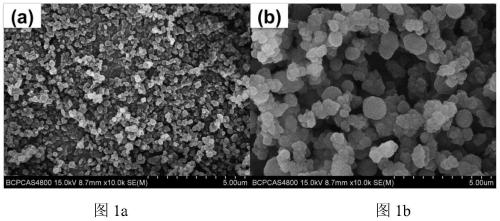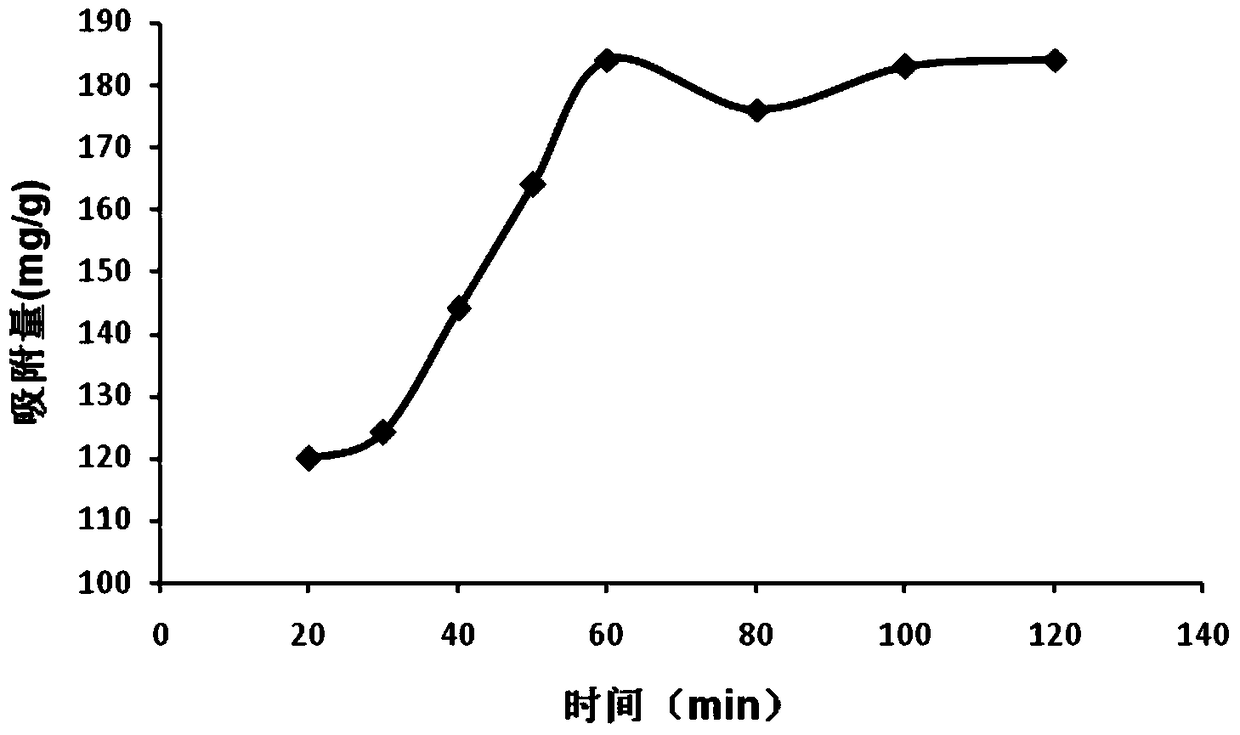A method for preparing molecularly imprinted polymers that recognize sulfonamide antibiotics
A molecular imprinting and polymer technology, applied in the field of pollutant detection, separation and purification, can solve problems such as unfavorable sulfonamide antibiotic identification methods, sulfonamide antibiotic identification, etc., to improve adsorption performance, enhance mechanical properties, and enhance application potential. Effect
- Summary
- Abstract
- Description
- Claims
- Application Information
AI Technical Summary
Problems solved by technology
Method used
Image
Examples
Embodiment 1
[0018] (1) Prepolymerization of template molecules: dissolving sulfonamide, 4-vinylpyridine and acrylamide in acetonitrile according to the molar ratio of 1:2:2, stirring at room temperature to form a homogeneous transparent solution;
[0019] (2) Immobilization of template molecules: according to the ratio of trimethylolpropane trimethacrylate: sulfonamide molar ratio of 10:1, add trimethylolpropane trimethacrylate to the solution of step (1), stir at room temperature After dissolving, add 20mg of azobisisobutyronitrile to the solution, pass through nitrogen gas to deoxygenate, after sealing, place the solution in a water bath at 60°C for 12 hours;
[0020] (3) Template molecule elution: collect the supernatant and precipitate; use a UV spectrophotometer to test the absorbance of sulfonamide in the supernatant; add the eluent to the centrifuged precipitate, stir and reflux at 100°C for 30min, After centrifugation, collect the precipitate and supernatant respectively, and repe...
Embodiment 2
[0023] (1) Prepolymerization of template molecules: dissolving sulfonamide, 4-vinylpyridine and acrylamide in toluene at a molar ratio of 1:1.5:1.5, and stirring at room temperature to form a homogeneous transparent solution;
[0024] (2) Polymerization: According to the ratio of trimethylolpropane trimethacrylate: sulfonamide molar ratio of 15:1, add trimethylolpropane trimethacrylate to the solution in step (1), stir at room temperature until dissolved , and then add 30 mg of azobisisobutyronitrile to the solution, pass through nitrogen gas to remove oxygen, after sealing, place the solution in a water bath at 80°C for 12 hours;
[0025] (3) Template molecule elution: the solution obtained in step (2) is centrifuged, and the supernatant and precipitate are collected; the absorbance of sulfonamide in the supernatant is checked by a UV spectrophotometer; The eluate was stirred and refluxed at 100°C for 60 minutes, and the precipitate and supernatant were collected after centri...
Embodiment 3
[0028] (1) Template molecule prepolymerization: Dissolve sulfonamide (template molecule), 4-vinylpyridine and acrylamide in methanol at a molar ratio of 1:1:1, and form a homogeneous transparent solution after stirring at room temperature;
[0029] (2) Immobilization of template molecules: according to the ratio of trimethylolpropane trimethacrylate: sulfonamide molar ratio of 20:1, add trimethylolpropane trimethacrylate to the solution of step (1), stir at room temperature After dissolving, add 40mg of azobisisobutyronitrile to the solution, pass through nitrogen gas to deoxygenate, after sealing, place the solution in a water bath at 70°C for 24 hours;
[0030] (3) Template molecule elution: the solution obtained in step (2) is centrifuged, and the supernatant and precipitate are collected; the absorbance of sulfonamide in the supernatant is checked by a UV spectrophotometer; The eluate was stirred and refluxed at 120°C for 30 minutes, and the precipitate and supernatant wer...
PUM
| Property | Measurement | Unit |
|---|---|---|
| adsorption capacity | aaaaa | aaaaa |
| adsorption capacity | aaaaa | aaaaa |
| adsorption capacity | aaaaa | aaaaa |
Abstract
Description
Claims
Application Information
 Login to View More
Login to View More - R&D Engineer
- R&D Manager
- IP Professional
- Industry Leading Data Capabilities
- Powerful AI technology
- Patent DNA Extraction
Browse by: Latest US Patents, China's latest patents, Technical Efficacy Thesaurus, Application Domain, Technology Topic, Popular Technical Reports.
© 2024 PatSnap. All rights reserved.Legal|Privacy policy|Modern Slavery Act Transparency Statement|Sitemap|About US| Contact US: help@patsnap.com










